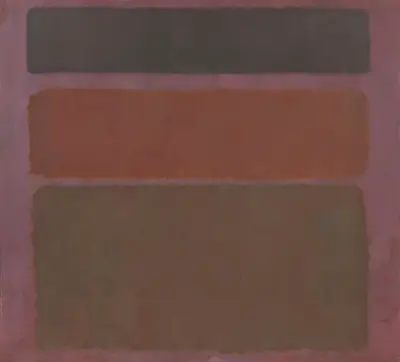It was in 1943 that Mark Rothko, alongside colleague Adolph Gottlieb, wrote some opinions that would set out their intended direction over the next few years. They would write collectively that, "...We favor the simple expression of the complex thought. We are for the large shape because it has the impact of the unequivocal. We wish to reassert the picture plane. We are for flat forms because they destroy illusion and reveal truth." We see elements of that approach here within No. 16 (Red, Brown, and Black). Rothko would avoid the traditional principles of Renaissance perspective and push directly for something new. He would mix all manner of different tones of pigment to vary color along with opacity which made the painting flat but also come alive, with a new atmosphere in which viewers could entirely lose themselves.
Rothko hoped that these compositional strategies would invite visual and emotional contemplation on the part of the viewer, creating the conditions for silence and reflection. He would develop huge canvases in order to strengthen this experience, where viewers would be overwhelmed by colour on canvases which would stretch to several metres tall and wide, occupying their entire gaze. This particular artwork was completed in 1958, by which time the artist had been working within this style for many years and was entirely comfortable in how he was going about his work, and what he was trying to achieve. It was a long process to get to this point, though, as Rothko had worked within all manner of other styles before working in this way and it would take much of his career to pass before he finally found the style in which he would become most famous.
"...Often, towards nightfall, there's a feeling in the air of mystery, threat, frustration - all of these at once. I would like my paintings to have the quality of such moments."
No. 16 (Red, Brown, and Black) can normally found in New York in the collection of MoMA, an American institution which remains one of the finest contemporary art galleries or museums in the world. Rothko is very well represented here, with a number of paintings and drawings but you will also find a number of other key artists from the 20th century including the likes of Georgia O'Keeffe, Barnett Newman, Joan Miro and also Jackson Pollock. Those with a specific artwork in mind should always check ahead that it is actually on display, as such large collections as this have to be rotated over time in order to allow as many items to be seen as possible.


